Ever since the release of large language model-based image generators like Dall-E, an ever-growing debate surrounding authenticity, ownership, and the role of human creativity in photography has commanded global attention and headlines.
Will AI replace photographers? That is the grand question that lies at the root of this argument, and one that is not as easy to answer as you may first assume.
That is why I wanted to set aside some time today to talk about this complex issue of AI images and what role they may play for us photographers in the near future.
Instead of bleak, dystopian fearmongering or naive, exaggerated sales pitches, let’s take a look at what current trends actually indicate, shall we?
Contents
- Understanding AI in Photography Today
- Advantages of Artificial Intelligence in Photography
- What AI Still Can’t Do: The Unique Human Touch
- How AI Is Reshaping and Impacting the Photography Industry
- Ethical Challenges in AI-Driven Photography
- The Future of Collaboration: Humans and AI Creating Together
- What Other Photographers Are Saying
- Conclusion: The Hybrid Future of Photography
- Take Away
Understanding AI in Photography Today
There is no doubt in anyone’s mind that AI-generated images have already substantially altered the photographic landscape. Let’s take a look at how some of this has played out thus far!
AI-powered Cameras and Smartphones
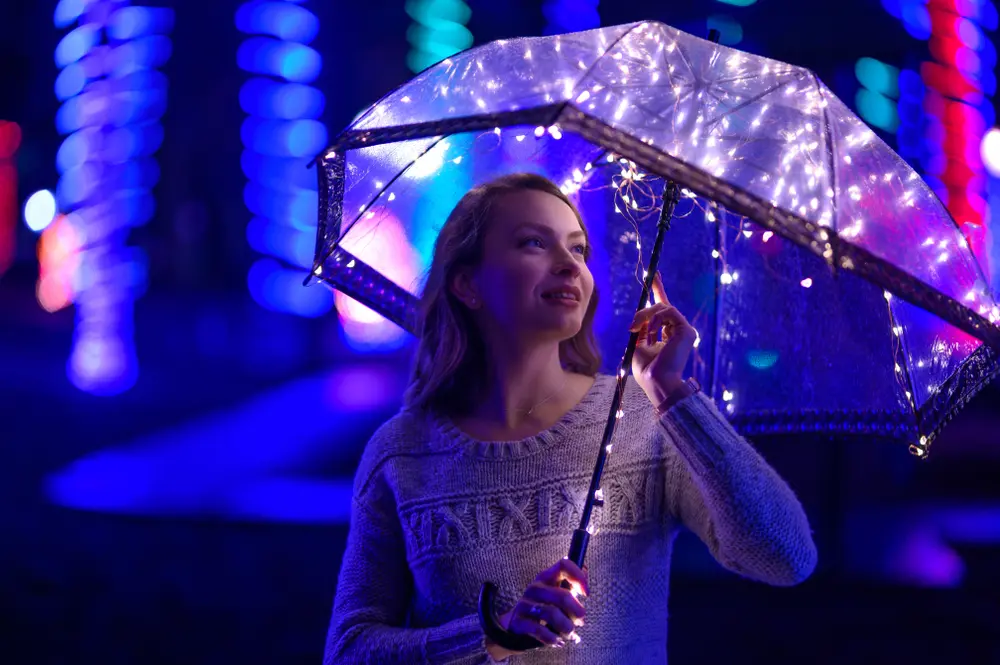
For the past two decades, the vast majority of photographs snapped worldwide have been taken with a camera phone. With that in mind, it is rather significant that AI-powered hardware is increasingly becoming an industry standard in the smartphone segment.
AI-powered auto-enhance, facial recognition, and advanced tracking modes are now commonplace. The same goes for so-called ‘portrait mode’ enhancements that use LLM technology to mimic the look and feel of larger sensors and telephoto lenses.
Professional photographers may still balk at these kinds of gimmicks, and not without good reason. But there is also no doubt that these kinds of automated conveniences are hugely popular and may trickle down to the enthusiast segment in the years to come.
It is already hard to distinguish between real and computer generated imagery even though the technology is still very new. I can only imagine that AI will get even better with every passing month.
John Richard (Headshot Photographer)
AI in Editing and Post-Production
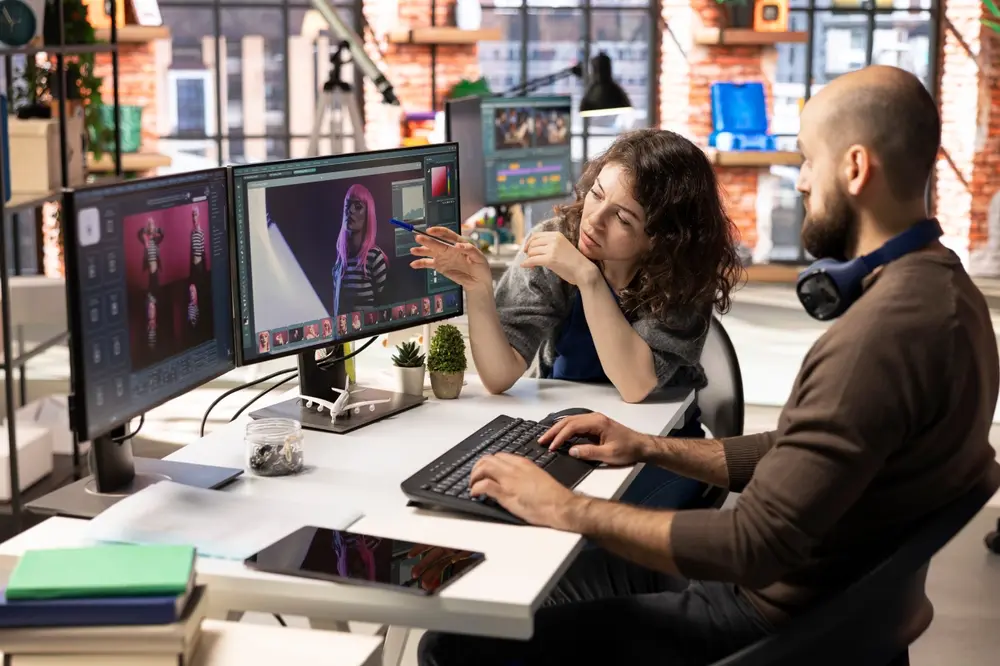
From industry stalwarts like Adobe to relative newcomers like Luminar AI, leveraging large language models in post-processing is also becoming an increasingly common sight.
Ranging from advanced image enhancement algorithms to complex filters that can intelligently correct optical flaws and iron out imperfections in color and exposure, AI-powered photo editing software is already hugely powerful.
Smart Culling and Photo Management
Organizing your photo library or your portfolio has never been the most glamorous task. Yet, it’s a crucial concern both for amateurs and professional photographers alike.
AI tools have completely streamlined this once arduous, manual process down to a few clicks of the mouse.
Using simple, easily customizable parameters, artificial intelligence algorithms can nowadays completely take over the task of managing a sizable library of pictures, which includes smart, automatic culling of duplicates and optimizing images for particular audiences.
Advantages of Artificial Intelligence in Photography
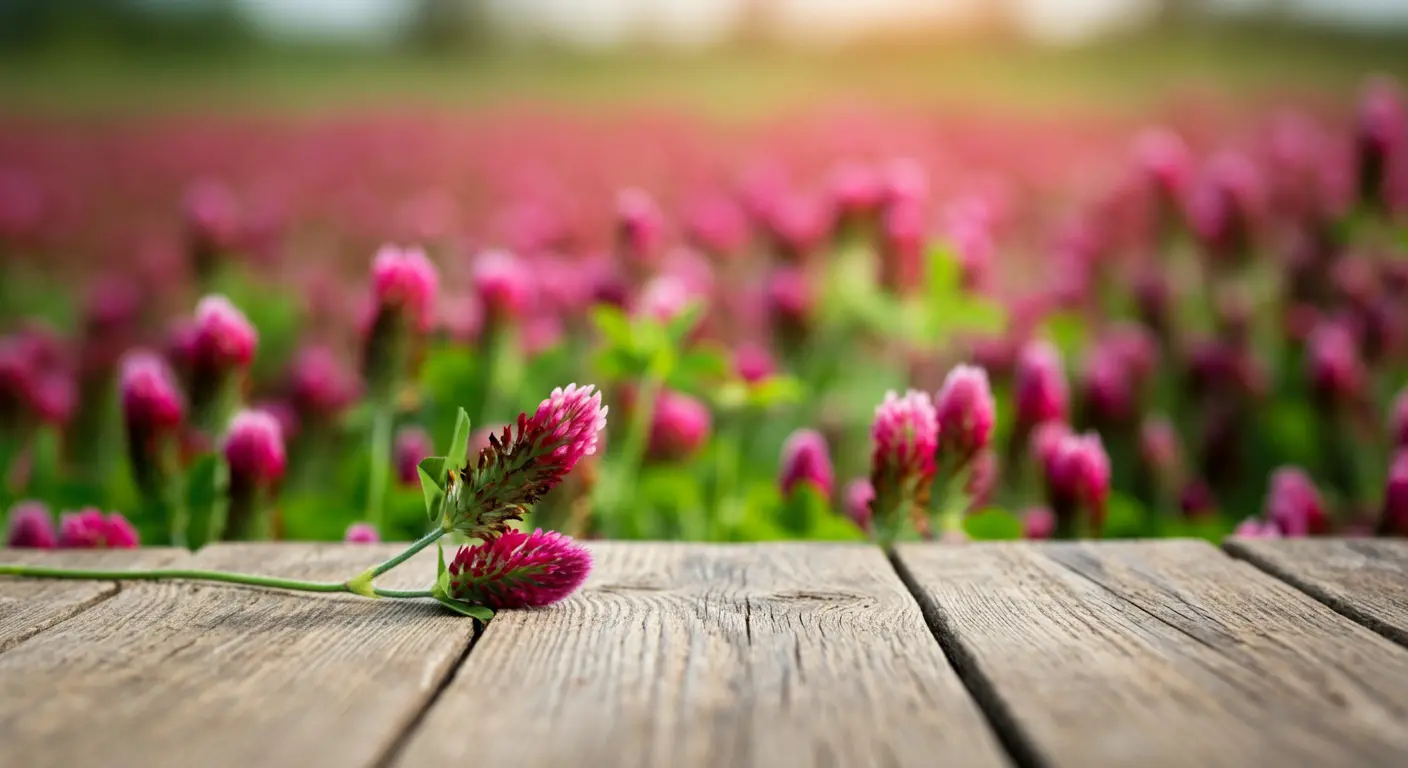
Even the fiercest critics of AI-generated images and the role of AI in photography in general have to admit that the current wave of technology has brought a lot of improvements in convenience and quality of life for us photographers.
Let’s take a look at some of these one by one to understand the potential benefits of working with AI imagery.
Faster Workflows and Automated Editing
Most of these aforementioned improvements come down to sheer speed and efficiency. AI-generated images themselves obviously take less manpower, less time spent, and ultimately less financial resources to create than traditional photography.
But it goes much further than that. AI tools, like post-processing and library management software, as I mentioned above, have greatly simplified non-photographic busywork, allowing professional photographers to spend more time out shooting and fewer hours behind the desk, at least in theory.
AI-powered features will streamline editing workflows, automate tasks, and enhance creative possibilities. However, photographers must balance AI’s convenience with preserving their artistic vision.
Daniel Kordan (Landscape Photographer)
Artistic Enhancement and Style Transfer
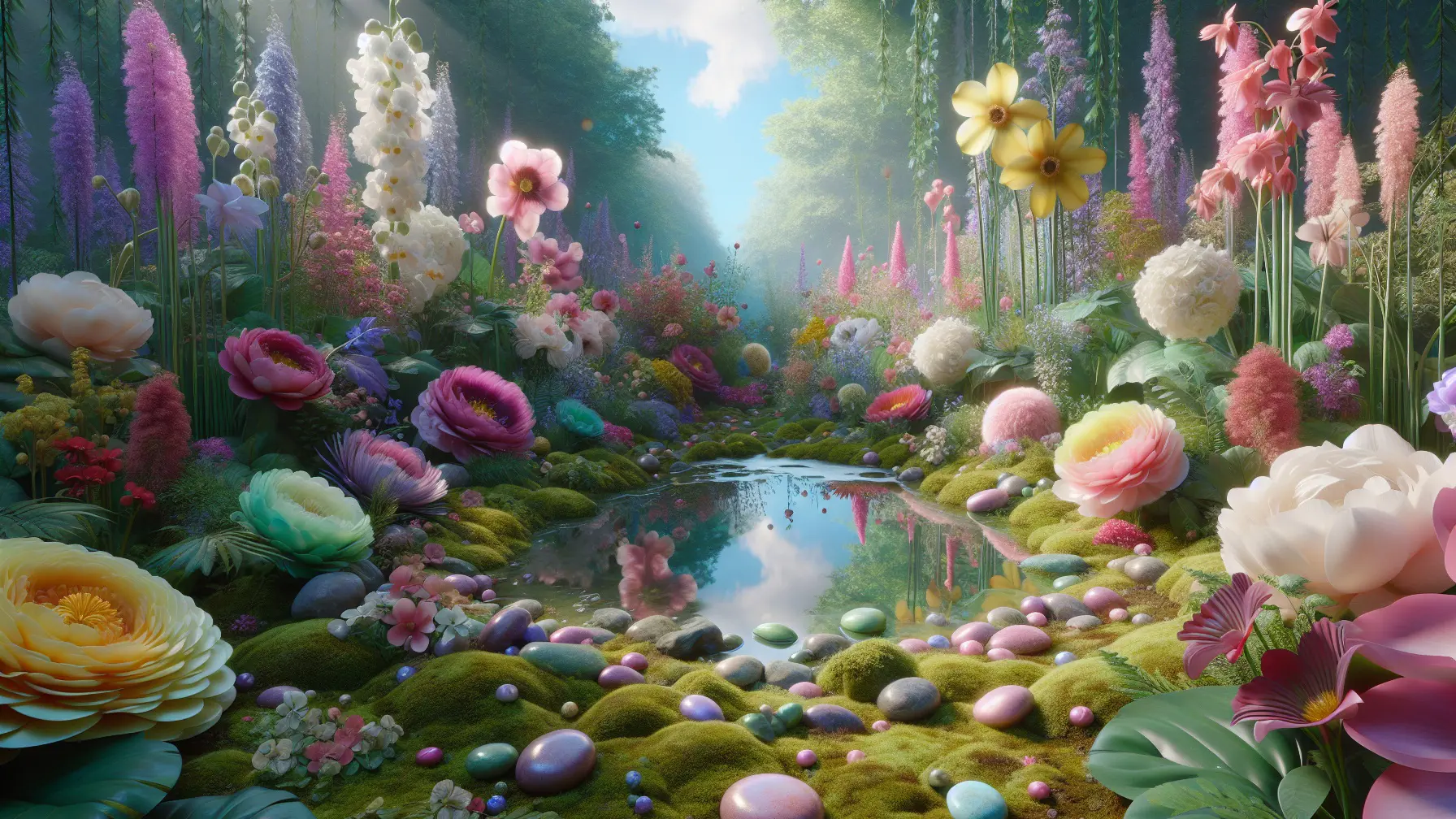
Because AI generated images are not limited by the constraints of the natural world, we can freely create art in any form that we can imagine.
We don’t have to worry about optics, exposure laws, or even the natural limitations of three-dimensional space. Pretty much anything can be fed into an AI generator and, with the right approach, turned into an image with at least a superficially realistic appearance.
Even short of using generative AI to create such outlandish art from scratch, it remains useful for ‘enhancing’ images with abstract flourishes that would be very difficult to achieve by hand. Surrealist artists especially benefit from this greatly!
Picture this, smarter editing tools, automated enhancements, and even AI-driven creative suggestions. It’s like having a tech-savvy assistant in your camera bag.
Cindy Melissa Boisvert (Portrairt and Lifestyle Photographer)
Cost-Effectiveness and Resource Management
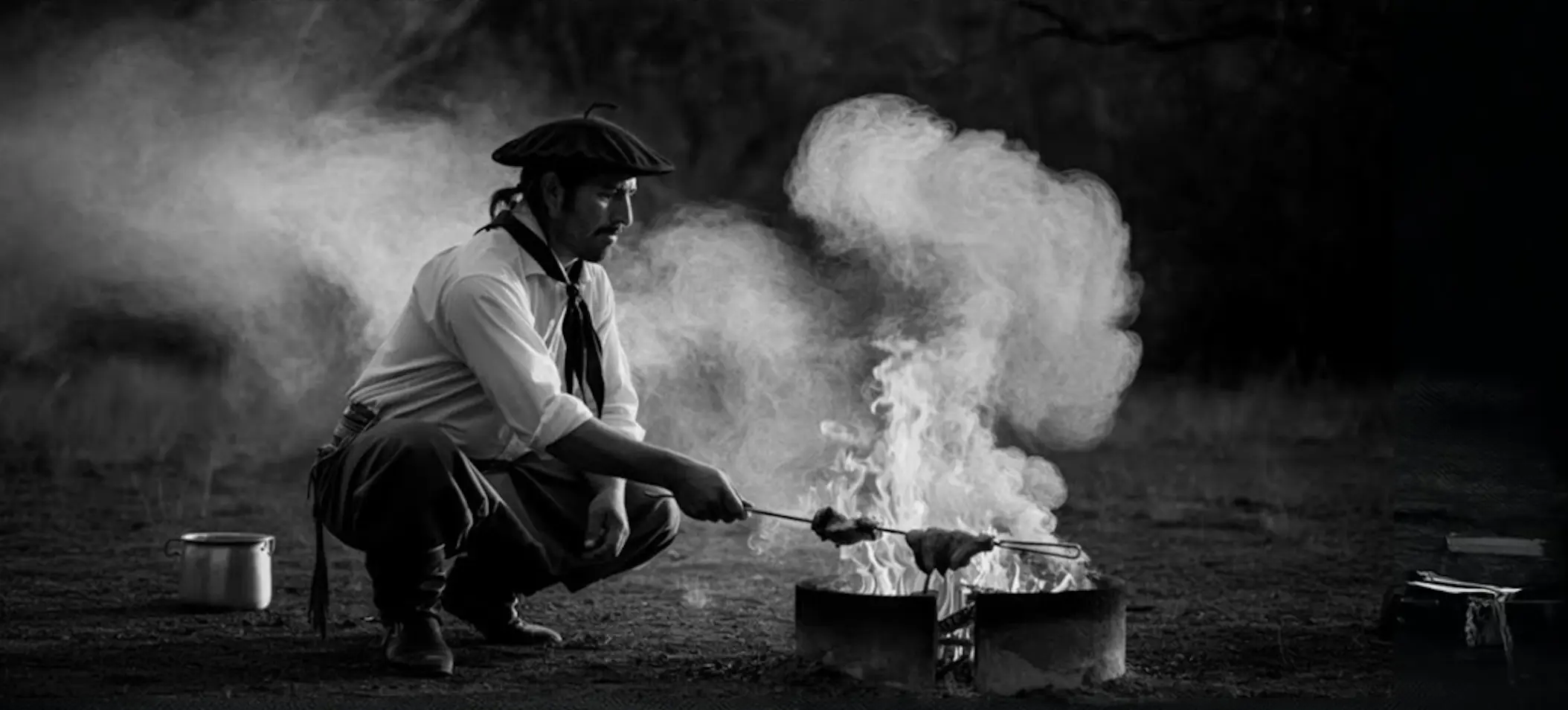
Because AI images are quick and cheap to create compared to capturing images through photography, they can save independent artists, small studios, and independent photography businesses a ton of overhead.
This could also help democratize the medium further, allowing almost anyone with a reasonably powerful computer to at least dabble in photography in some form.
Those currently championing the development of AI in photography hope that, armed with these kinds of tools, small voices in the digital art sphere will have an easier time making themselves heard.
Soon, I’m sure we’ll see automatic head-swapping, choosing the best expression from each family member to create a new composition (but without all the Photoshop work!), or even creating a whole new photo specific to a client’s request based on the images taken during their session. I think the change in the next decade will be massive.
Rebecca Sehn (Family Photographer)
What AI Still Can’t Do: The Unique Human Touch
With all that said, we also have to keep our feet on solid ground and admit that AI, at least in its current form, also exhibits a lot of shortcomings. It is important to underline just where artificial intelligence falls short and where human creativity trumps technology in order to make the best decisions for ourselves as photographers.
Creativity and Emotional Intelligence
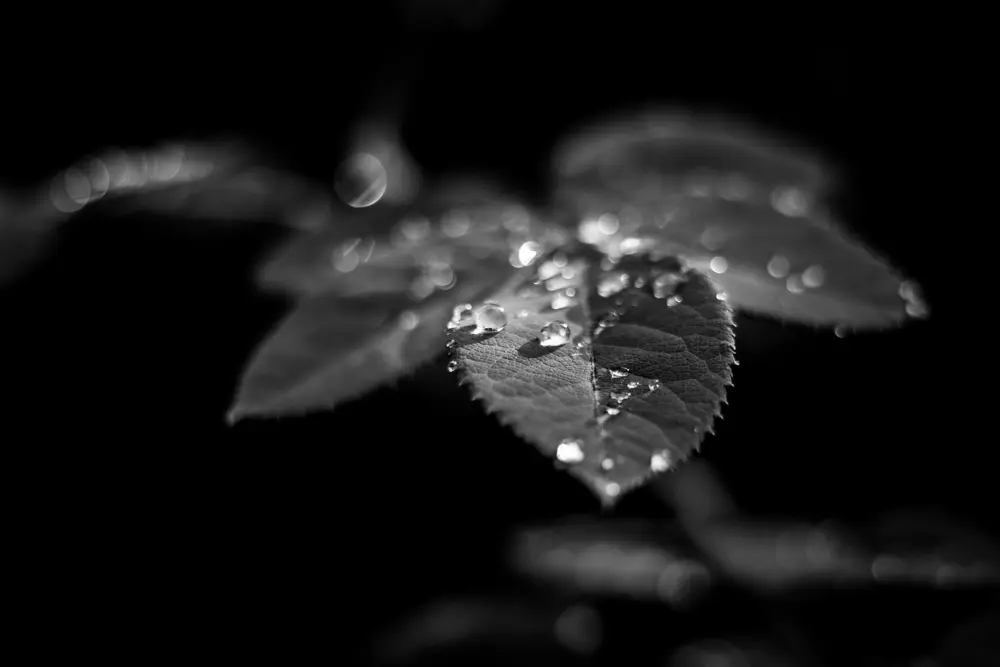
Unlike us, an image generator does not create art through a conscious, deliberate, and intellectual process. It simply assesses probability by looking at millions of examples of existing images and piecing together the pixels to match.
It is very much the photographic analogue to a paint-by-numbers game, automated.
By contrast, human photographers infuse their art with their own unique thoughts, feelings, inspirations, biographical details, humor, and more. Our ability to tell stories and to relate to one another through them is what sets us apart. This is an aspect of photography that the current crop of AI generated images cannot emulate even partially.
I think that AI will force photographers to work even harder to separate themselves from the crowd with their ideas, creativity, empathy and humanity. These are the things that a machine cannot do or understand. As the machines improve technically, limitlessly, and flawlessly, it will be up to us to use our ideas and hearts to make work that speaks to others and our shared experiences.
Andrew Scrivani (Food Photographer)
The Power of Serendipity
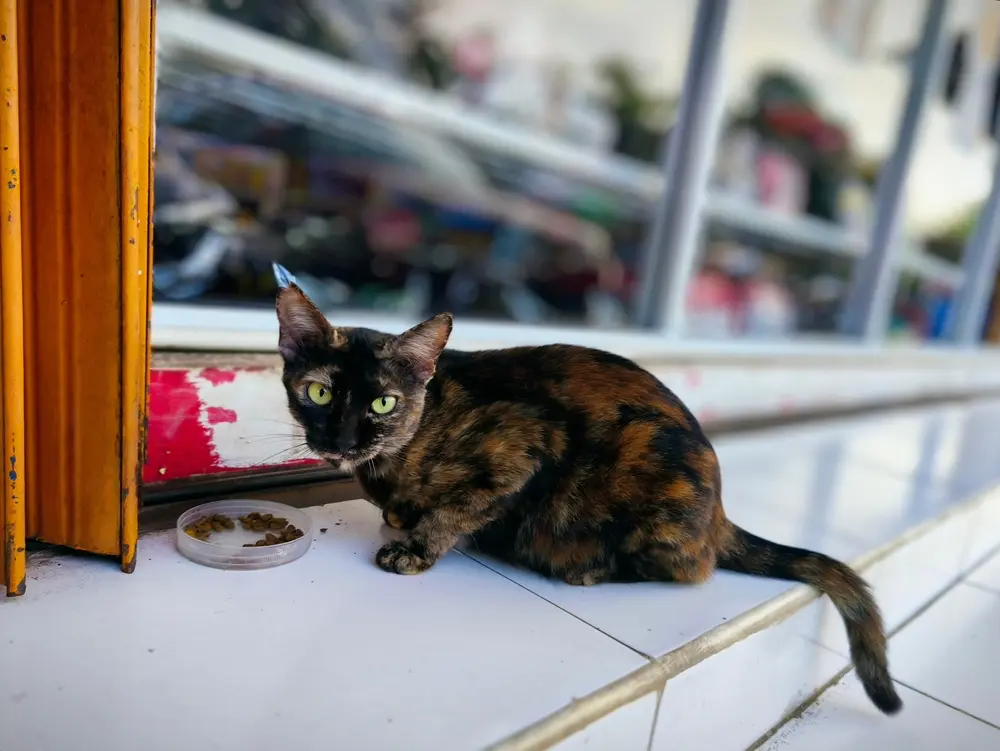
Another crucial difference is the unique experience of tripping the shutter at a magical moment and capturing a scene in perfect serendipity, something that can only happen in real-life photography, where human imperfection and creativity intersect.
While we may head into a shoot with a solid plan or goal, it is random, ‘happy accidents‘ that often truly make our images stand out. This surprise factor, a consequence of human fallibility, some may say, cannot be replicated by AI.
Especially in event photography, which includes weddings, for instance, but also sports photography and the like, this difference is absolutely crucial. Audiences want to really feel and empathize with real people ‘in the heat of the moment‘, not an approximation carefully fine-tuned but lacking spontaneity.
Technical Limitations and Errors
But beyond what artificial intelligence cannot grasp due to contextual differences, there are also issues on a much more basic, technical level.
For instance, AI generated images remain somewhat constrained in their ability to reach beyond the content of the largest available data sets. This is fundamental to how LLMs operate: they require huge amounts of example data to mimic and, in doing so, generate new images that are similar to the templates.
When tasked with something more creative, AI often stutters, creating glitchy, inconsistent, or totally irrelevant outputs compared to the prompt. AI lacks any ability to understand contextual cues, implications, or emotional depth, and so it often creates images inconsistent in tone.
The images are formulaic, and lack emotions or originality. It’s hard to imagine machines managing to replicate raw human emotion.
Jenifer Bunnett (Fine Art Photographer)
How AI Is Reshaping and Impacting the Photography Industry
For better or for worse, AI generated images have already begun turning the whole industry on its head. Let’s take a look at some key areas where human photographers have already had to adapt due to the rise of artificial intelligence.
Job Security, Market Shifts, and New Competition
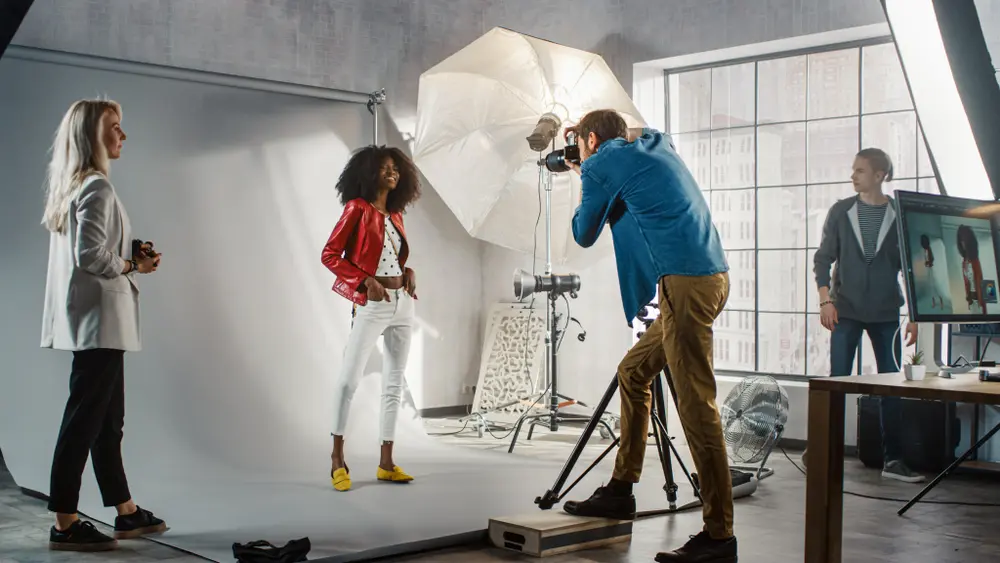
Practically as soon as generative AI gained the ability to easily produce images from text prompts, a huge public outcry over the future of human photographers in the economy erupted.
The fears are easy to understand. If photography becomes practically free to produce without any need to hire a professional, why bother giving photographers any work instead of letting AI do the job?
While this catastrophic prediction has not so far come true, it is nonetheless the case that some niches, such as stock photography, are increasingly facing disruption, and even replacement, by image generator tools.
As AI-generated images gain quality and accessibility, the worth of a photographer’s craft could become harder to discern. Certain photography niches more than others (stock photography is the first that comes to mind) may feel the impact more significantly than others.
Silvia Travieso (Fine Art Photographer)
The Evolving Role of Photographers
What has become the far more dominant outcome of the AI craze, however, is a sort of synergy between human creativity and algorithmic processing power.
In more and more fields, top-flight professional photographers are expected to combine their traditional skill set with an aptitude for large language models.
In this kind of arrangement, AI takes over post-processing, library management, and even publishing and marketing, while the human creative maintains control over the foundation of their work. This maintains a high level of authenticity, real subjects, real photography, and real scenes, while augmenting it with the convenience and efficiency that AI provides.
At the same time, it is also raising the skill ceiling for many of us, especially on the digital front of things!
I don’t see it as a threat. Clearly, for certain jobs, especially commercial ones where you have to do simple stock photography, still-life, or lifestyle, then yes, those jobs could go to AI. But I love how it can help you create your own world and enrich your photography. You can use AI as a mood board, you can use your own prompts, and come up with ideas that you would never have thought of before.
Julia Wimmerlin (Contemporary Fine Art Photography)
Ethical Challenges in AI-Driven Photography
More so than legal implications, the by far most controversial aspect of AI generated images is the ethical dilemmas they represent. Let us take a look at privacy concerns, authenticity fears, and more.
Authenticity and Image Integrity
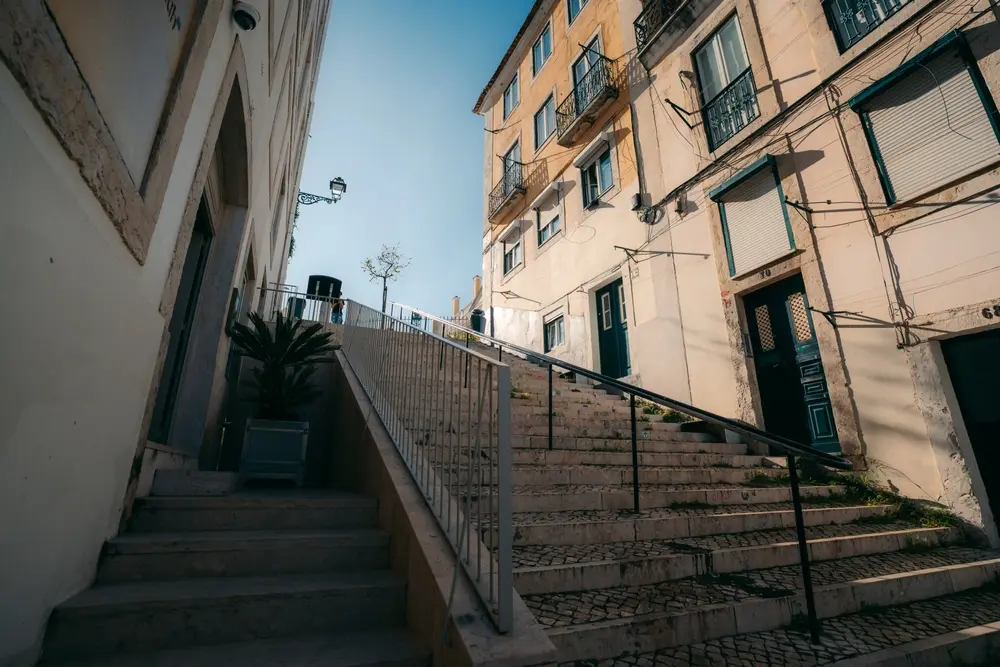
Since AI generated photography can happen entirely behind a computer screen, without any camera or location necessary, there is an obvious concern about realism and authenticity.
‘Real photography’ certainly allows for careful staging, post-processing, and all sorts of manipulative creative choices that can greatly affect its impact on the audience.
But AI takes this a step further by completely opening up the entire process to the personal touch of the photographer. Not even the laws of physics are a limit here!
Thanks to that, it is for instance possible to easily create ‘deepfakes‘, realistic-looking footage of public figures in scenes that are entirely fictional.
In our age of fake news and the like, trickery like this threatens to completely undermine public trust in visual media.
AI can be misused for altering backgrounds, adding or deleting elements, and risking the authenticity of the craft. The challenge is to harness technology for skill enhancement without succumbing to the allure of manipulating narratives.
Ratish Nair (Wildlife Photographer)
Privacy, Consent, and Surveillance
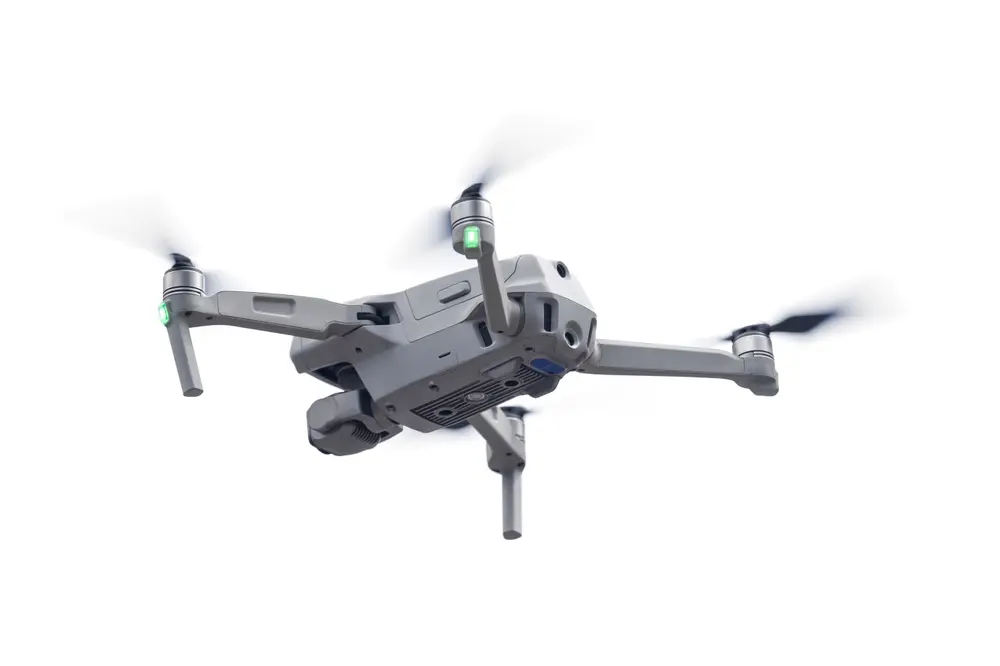
Deepfakes and no-holds-barred image generation haven’t just increased worries about authenticity. There is also a great concern about their impact on personal privacy, consent, and data protection. And the way that AI continues to disrupt previous paradigms goes much further.
Remember that AI cannot just generate images from scratch. It can also, for instance, power and control drones, CCTV systems, and autonomous vehicles with video and still cameras. This has exacerbated previously lingering concerns about the extent of public surveillance and data gathering intruding on the lives of the general public.
While we photographers ultimately do not have much of a stake in this, we will still be associated with the damage done. Most photographers have just as little interest in having their privacy violated as anybody else, so it is up to us to communicate that effectively and show that our creativity does not infringe on the rights of others.
The Importance of Transparency
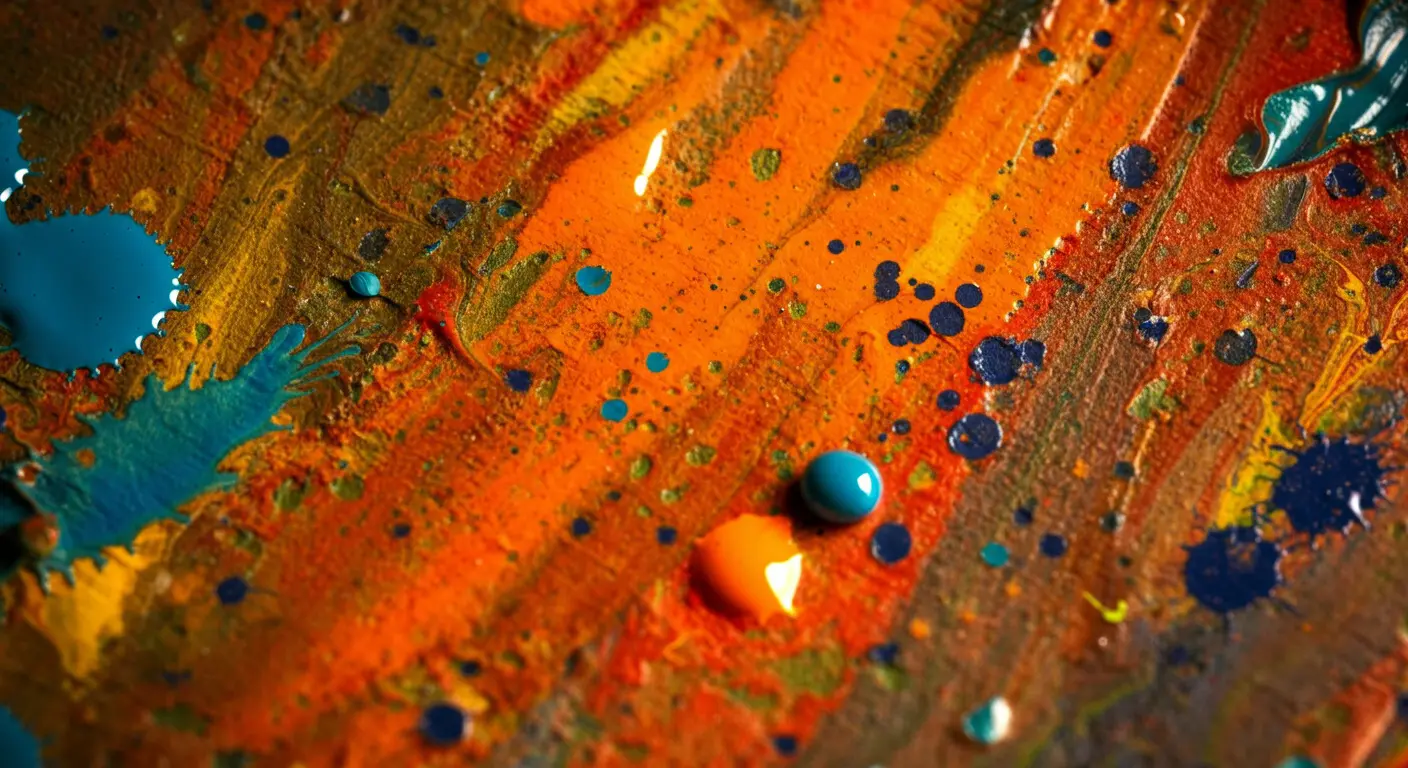
For us as photographers, striving to make better art in this complex landscape, what this means is fairly clear. We can’t let AI, with all its exploitative characteristics, come to define what a real photo means to the general public.
We cannot let AI take the place of photographers in the minds of those who may not create art, but crave the personal touch of somebody who knows how to articulate the human experience. Through photography, we can fill that need, but we have to be forthcoming in communicating how we do this.
Being transparent and underlining where and how we use or do not use AI in our work helps ground our audience in reality. With hope, this can prevent new technology from muddying the waters of authenticity in the future.
I believe AI-generated images will create confusion for viewers of photography. I’m already seeing this on social media. Proper disclosure is very important to help viewers understand the context of how an image was created.
Scott Smorra (Fine Art Nature and Landscape Photographer)
The Future of Collaboration: Humans and AI Creating Together
With the stage set in this manner, what will the near future look like for photography as an art form? Will human photographers bring audiences closer together and remind us of the intangible value of creativity? Or will AI replace photographers entirely and cause new divisions?
While there is no way to predict these things with perfect accuracy, I feel that many of the clues we already discussed above point to a future which lies somewhere in between the extremes.
AI as a Creative Partner, Not a Replacement
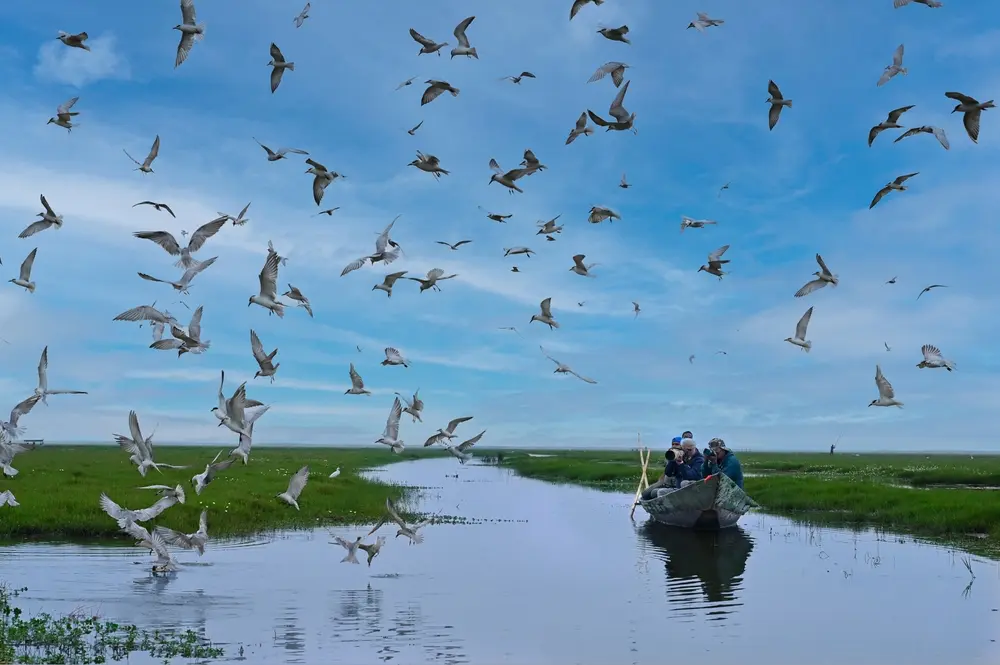
More and more of the AI tools cropping up most recently primarily serve as convenient workflow helpers. Instead of seeking to replace photographers with algorithms, AI tools increasingly complement and assist many artists with menial, complex, and numbers-based tasks ranging from post-processing to publishing, marketing, and fine detail optimization.
Simply entering words and having an image will be cool, but I think as we push past the scary parts of competing with it, we will become stronger artists. We will and can use AI to help and support our creativity.
Kristopher Andres (Adventure and Landscape Photography)
AI-assisted image stabilization, autofocus, and subject tracking also fall into this category. They help make it easier to shoot tack-sharp images than in the early days of mechanical manual gear, but without fundamentally removing the photographer’s agency.
This points to a future where AI will increasingly serve as just another tool in the shutterbug’s already substantial belt of gadgets.
Fostering Individuality and Personalization
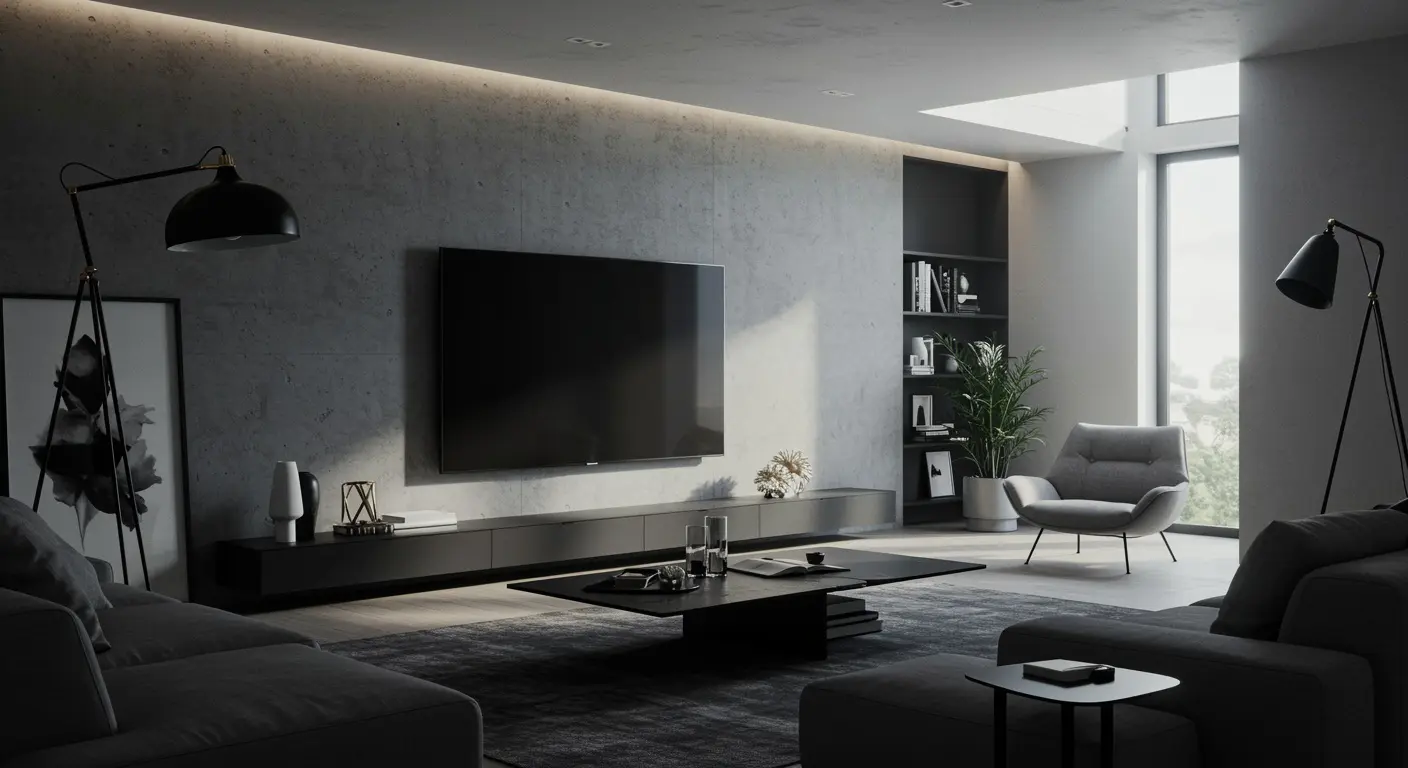
One of the many common fears surrounding AI adoption is the gradual erosion of emotional depth and the personal nature of art. Critics fear that artificial intelligence will herald a new age of sameness, reducing individuality and watering down the human experience.
AI will become a cheaper and more efficient alternative for generic photography jobs that can be automated. However, AI can’t replace creative artists, both because AI is not truly creative and because art buyers are generally interested in the skills, creativity, lives, and legacies of (human) creators.
Guy Tal (Landscape Photographer)
As someone who grew up and grew into photography right around the messy transition period between the analog and digital eras, I find these worries very easy to relate to. But at the same time, there is a clear path for AI to actually promote individual expression, or at the very least affect it in a positive way.
Using AI tools, making a photograph is easier now than ever before. Just as digital cameras, cheap, semi-automated, and widely available, democratized photography beyond anyone’s wildest imaginations, AI generated art could be the springboard for a new generation of photographers.
What Other Photographers Are Saying
We have heard from industry leaders throughout this article, but here’s what a range of other professional photographers have to say about the impact of AI on their craft. Their perspectives span concern, hope, blunt warnings, and cautious optimism, reflecting the complexity of this ongoing debate.
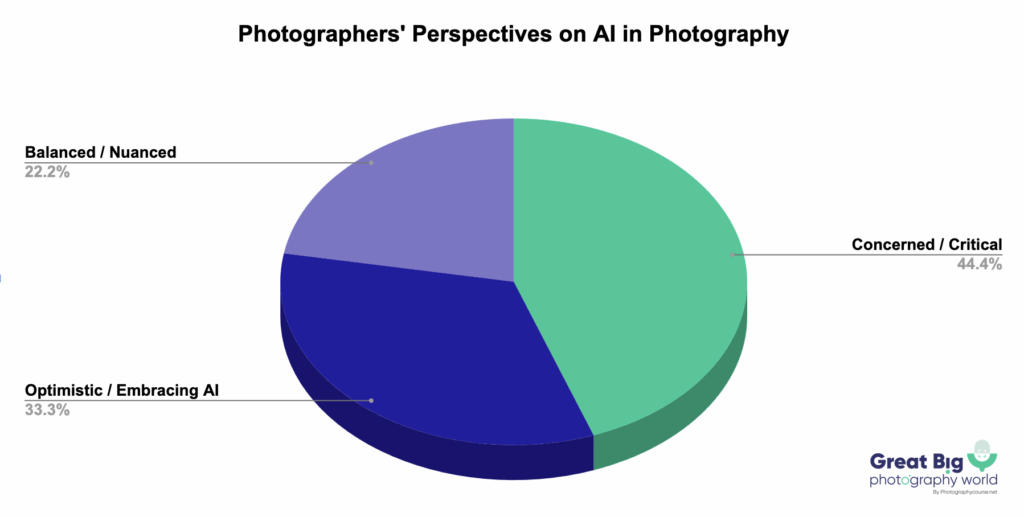
Joel Robison (Conceptual Photographer): “I see it making our work even more important because it will be up to real photos with metadata to document events in real-time. I think it will make certain genres much harder to gain any sort of foothold in and will likely make it very hard for many artists to continue to make money or pursue photography full-time.”
Richard Levine (Fine Art Photographer): ”AI produces amazing art. Yet it is the machine producing it, but humans are claiming credit for the images just because they paid a computer to search the Internet, melding images that others have taken, and yet all these people did was give AI a few instructions. AI images will replace the human photographer’s images, forcing humans to lose commissions and possibly careers.”
Zach Doehler (Landscape & Nature Photographer ): “It is definitely desensitizing people to beautiful images. Now, you can create something that is near-perfect within a few seconds of typing on your keyboard. I think it is important to remember, though, that while photography has only recently become a new format of creating art in the past 100+ years, older mediums of art, such as painting, drawing, instrumental music, etc, are still as popular today as ever before. AI will simply be another way of creating art, but it won’t replace photography.”
Mitchel Wu (Toy Photographer) : “AI will contribute to the worst imaginable photography that is uninspired, gratuitous, and cliché. And AI will contribute to incredibly creative, breathtaking photography, photography that engages the viewer and, above all else, helps to tell a story. Which result will depend on who is using it.”
Carolyn Cheng (Abstract & Landscape Photographer): “Photography as art consists of two elements: image making and storytelling. As image-making becomes easier and more accessible to a wider number of people through AI, photography will increasingly be more focused on the storytelling aspects of photography. While photographers will certainly need to adapt to the changes that AI will bring, they should be comforted by the fact that AI is not yet visionary. It still relies on historical artifacts to create composites of the past, but it can’t yet conceptualize new artistic paradigms for the future. In this respect, there will always be a place for artists.”
Jay Rowden (Documentary Wedding Photographer): “I am trying very hard to see AI as a force for good. It’s already here, and I believe all photographers should embrace it. There’s no doubt AI will impact certain genres. I’m not going to name them, but the writing for those genres is on the wall for everyone to see. But it’s too late to bemoan AI. The genie’s out of the bottle. The horse has bolted. It’s too late. So instead, see AI as an opportunity for growth, to learn new ways of working and being creative.”
Apparently, all photographers agree that AI will reshape photography in ways too big to ignore.
Conclusion: The Hybrid Future of Photography
While change is always daunting, and few technologies have promised more substantial change to photography as an art form than AI, the real future appears a lot more mellow than the dystopian fears of the naysayers and the idealistic slogans of the marketeers would suggest.
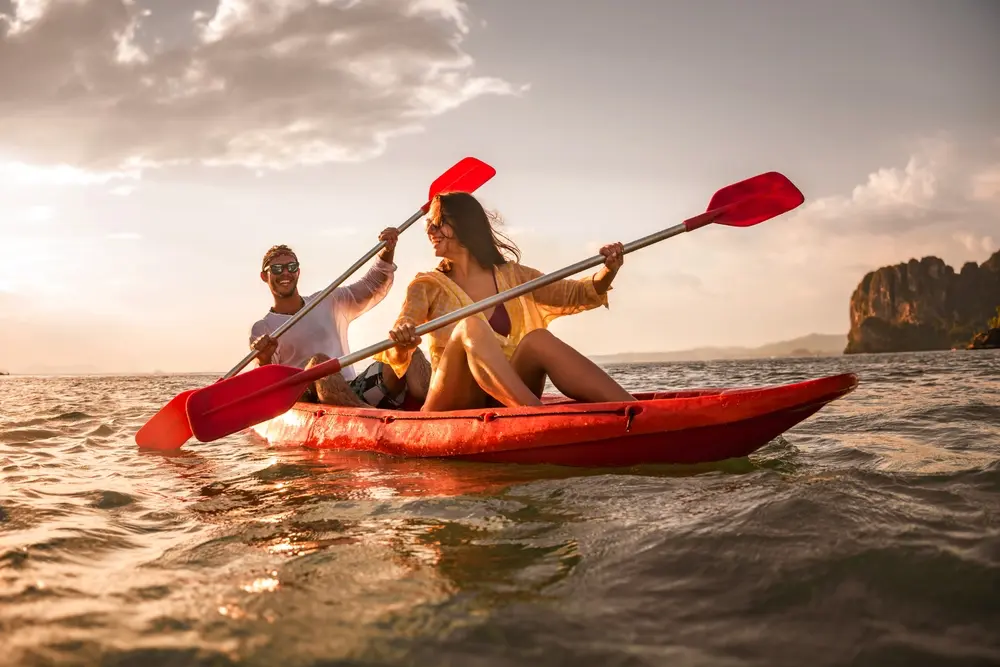
If current trends hold (which is always a gigantic assumption), it seems that AI images are here to stay and will form a crucial ingredient of the photography industry in the future.
However, the idea that artificial intelligence will replace photographers altogether seems far-fetched. Instead, a blend of manual and algorithmic workflow seems more likely, where we focus on efficiency and automation where it counts, but do not lose the creative touch that only an artist’s mind can provide.
For us photographers, this means being flexible and adapting to these changing trends will be key in the coming years. We might not have to fear for the end of our profession, but our jobs will definitely become more competitive and demanding.
Investing in your skill set has never been more potentially lucrative than now!
Take Away
AI photography need not be a thing for us to fear, and it almost definitely will not replace any of us within the foreseeable future. That said, LLMs remain an astounding tool that can shoulder a great deal of the work we are used to doing by hand. Improving efficiency, driving down costs, it’s a business tycoon’s dream tech, but it’s also useful for shutterbugs just the same. The most important thing going forward is to remain transparent about which technologies we use to create our art and to never mislead our audiences. Trust is going to be a luxury commodity in the years to come, and it’s a good idea to start investing right away!


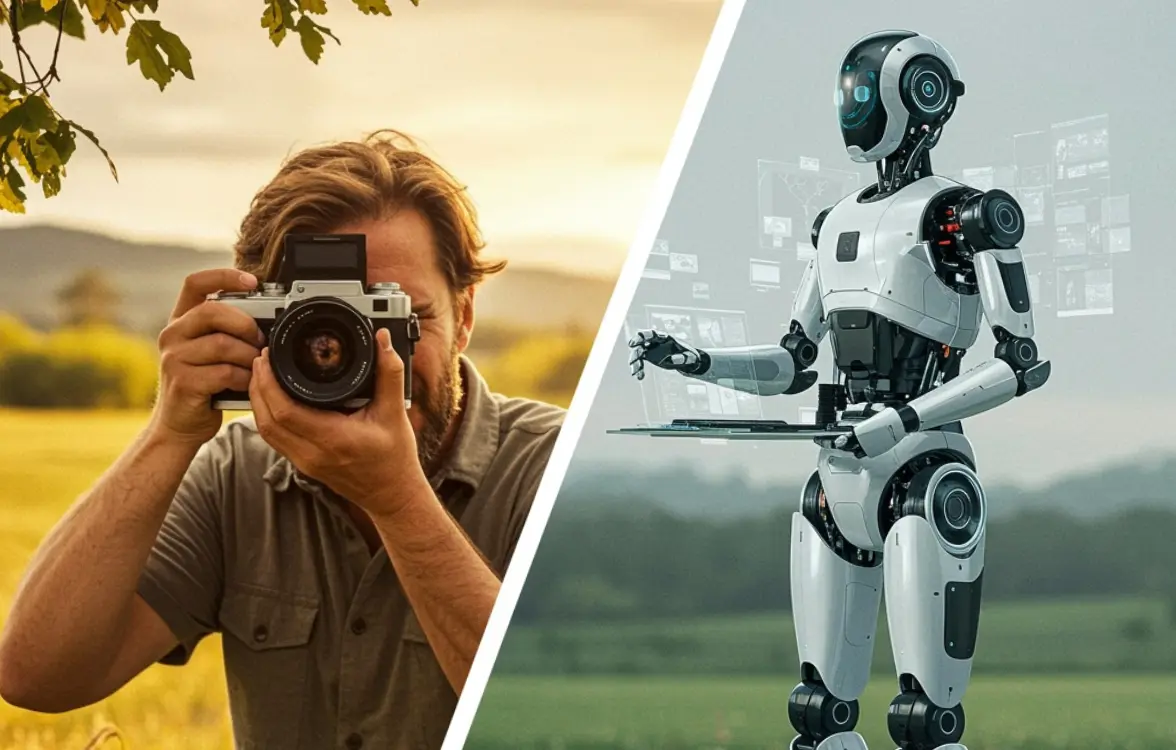





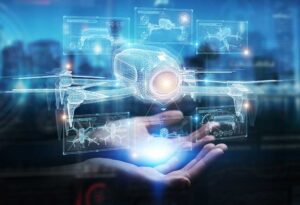
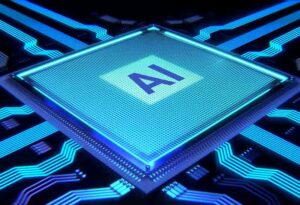
@Dadmeister This is something that we’ve had discussions on in the past. This article goes much further in depth than we did, but also comes to similar conclusions. What do you think?
Interesting indeed! As a photographer, I see AI sometimes as a helpful tool. Nevertheless, it cannot replace human creativity or the instinct behind a real photograph.